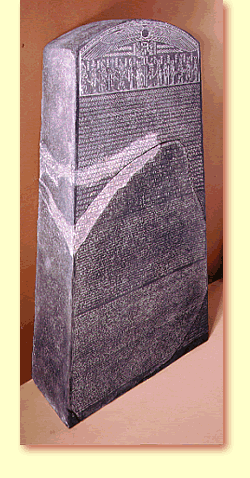|
|
 Modern reconstruction of the original apperance of the Rosetta Stone |
The inscription on the Rosetta Stone, fully conserved and
redisplayed for this exhibition, |

|
|
 Modern reconstruction of the original apperance of the Rosetta Stone |
The inscription on the Rosetta Stone, fully conserved and
redisplayed for this exhibition, |
